Isn’t it impressive how often we overlook the wonders right in our backyard? Living in Germany, I found myself exploring far and wide, from the historic streets of Rome to swimming with sea turtles in Greece. However, it took me quite a while to turn my gaze north to the capital of the very country I currently call home. I guess I just viewed all those half-timbered houses as something I’d “eventually” get around to after I saw everywhere else on my list.
I know I’m not the first (or the last) to uncover all the gems Europe holds. I’d venture to say that every servicemember stationed here shares a similar aspiration. However, I challenge that perspective and propose dedicating at least one long weekend to the captivating city of Berlin.
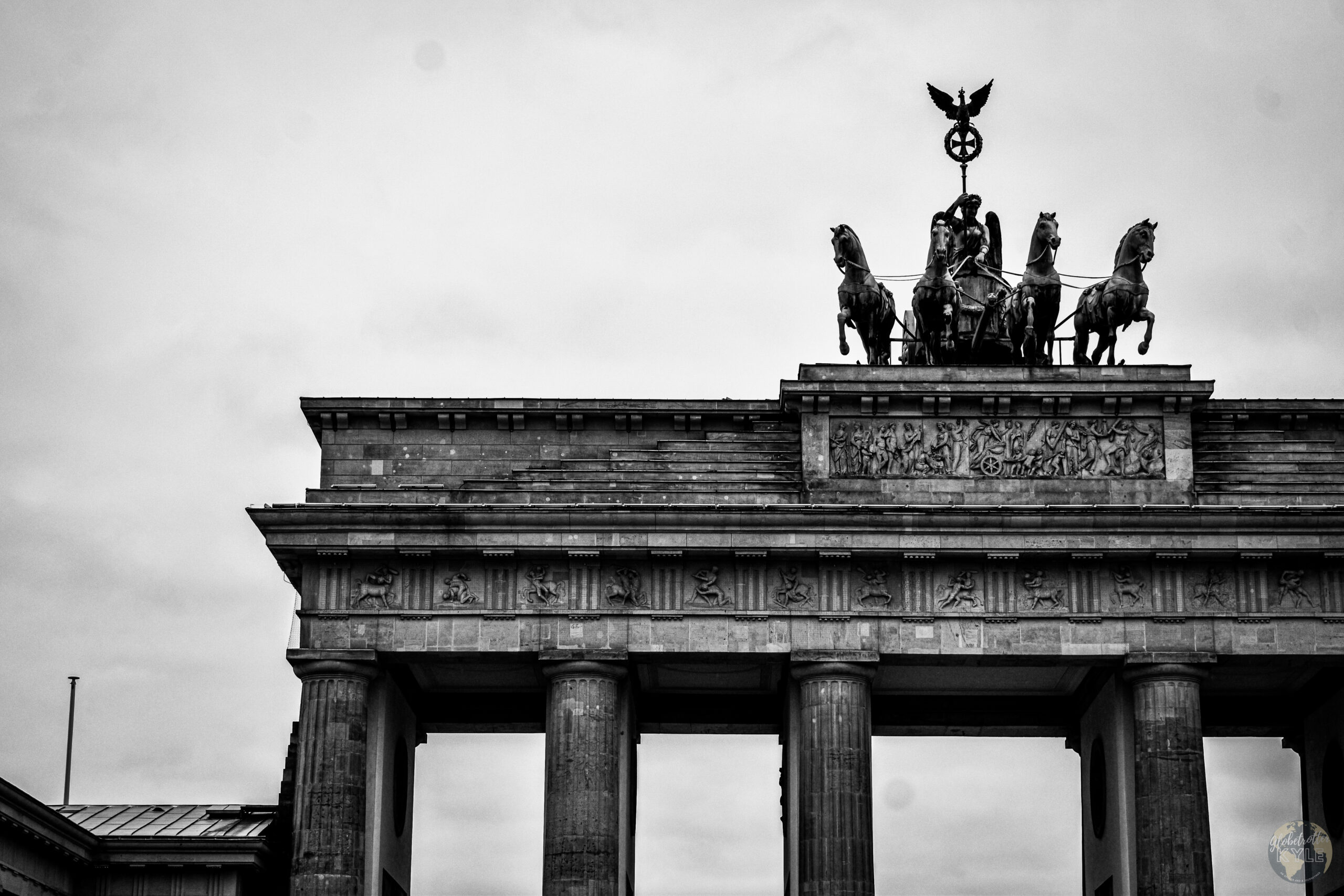
Even if you’re only remotely interested in military history, Berlin is a must-see town. From the barely standing remnants of an 1800s church bearing witness to Allied air raids, to the somberness instilled by the Jewish Museum’s architecture, the city echoes with reminders of a not-so-distant past.
Yet, Berlin isn’t just a haven for history buffs. For those less intrigued by the past, this city still earns its spot on my must-visit list. For starters, Berlin is one of the few cities in all of Germany that has an axe throwing establishment; and it’s awesome! Moreover, Berlin stands out as one of the select few cities where expats can savor an authentic American-style breakfast; complete with American/Japanese fusion pancakes!
In essence, Berlin’s magnetic charm lies in its seamless blend of history, culture, and vibrant energy, making it an unmissable stop during your European tour. Join me as I share my personal account of Berlin, along with recommendations for the city’s top attractions. Dive into a journey that transcends the ordinary and unveils the extraordinary facets of this captivating destination
Echoes of History: Brandenburg Gate, Berlin Wall, and The Topography of Terror
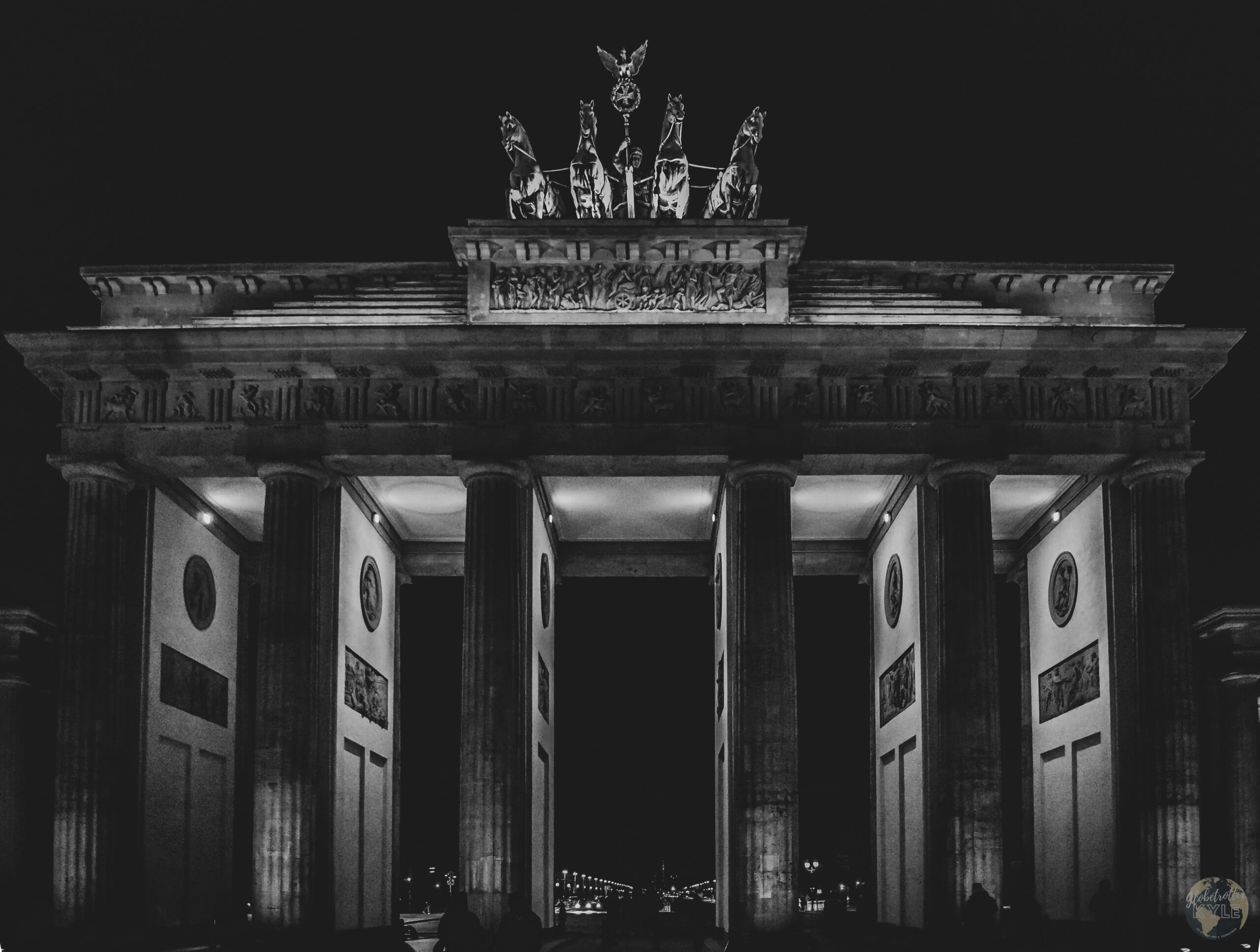
Ciara and I pulled into Berlin on a Saturday afternoon thanks to suuuuper cheap train tickets from FlixTrain (highly recommend). From there we headed straight to the Jewish Museum (more on that later) before calling it a night.
The next day started at Berlin’s most iconic sight: the Brandenburg Gate. Stepping out of the metro, a majestic symbol of resilience greeted us, standing tall against the grey sky, inviting us to traverse its iconic arches.
Approaching the Gate, even the cold Berlin air couldn’t freeze my sense of gravitas. Stepping onto Pariser Platz, the grandeur of the neoclassical structure encircled me. I couldn’t believe that I was finally standing at the cornerstone of so many historic moments!
The Quadriga atop the gate seemed tireless given its gallop through history. The subtle hum of the bustling city harmonized with the distant echoes of historic events that once unfolded at this very site, and I felt as though I found myself standing at the intersection of past and present.

Ciara and I continued our Berlin excursion to the Topography of Terror Museum, a rather dark and humbling exhibition showcasing the vile chapters of Berlin’s history. Located on the grounds of the former Gestapo and SS headquarters, the museum delves into the horrors of the Nazi regime. As we walked through the exhibition, the atmosphere grew somber the more we read, and the weight of the past pressed upon us.
Photographs and documents lined the walls, narrating the harrowing tales of oppression, resistance, deception, and tyranny. Standing in the museum, I felt a profound connection to the narratives of those who resisted dictatorship. And oddly enough, with the more I read, I felt a growing sense of pride in the decision I made seven years ago to join the Armed Forces.
I joined to stand up to this shit, and it was inspiring to see the heritage of my brothers and sisters in arms. Within those walls, the museum became a solemn space for reflection; a place where the echoes of the past resonated with the collective responsibility to ensure that such atrocities are never repeated.
Berlin, much like Rome, truly does become a living museum if you allow it to. These cities invite visitors to be participants in their narratives. Each step, a sentence; each site, a chapter, culminating in a dramatic novel that echoes throughout cobblestone streets.
Art, Faith, and Memory: Jewish Museum, Memorial, and Berlin Cathedral
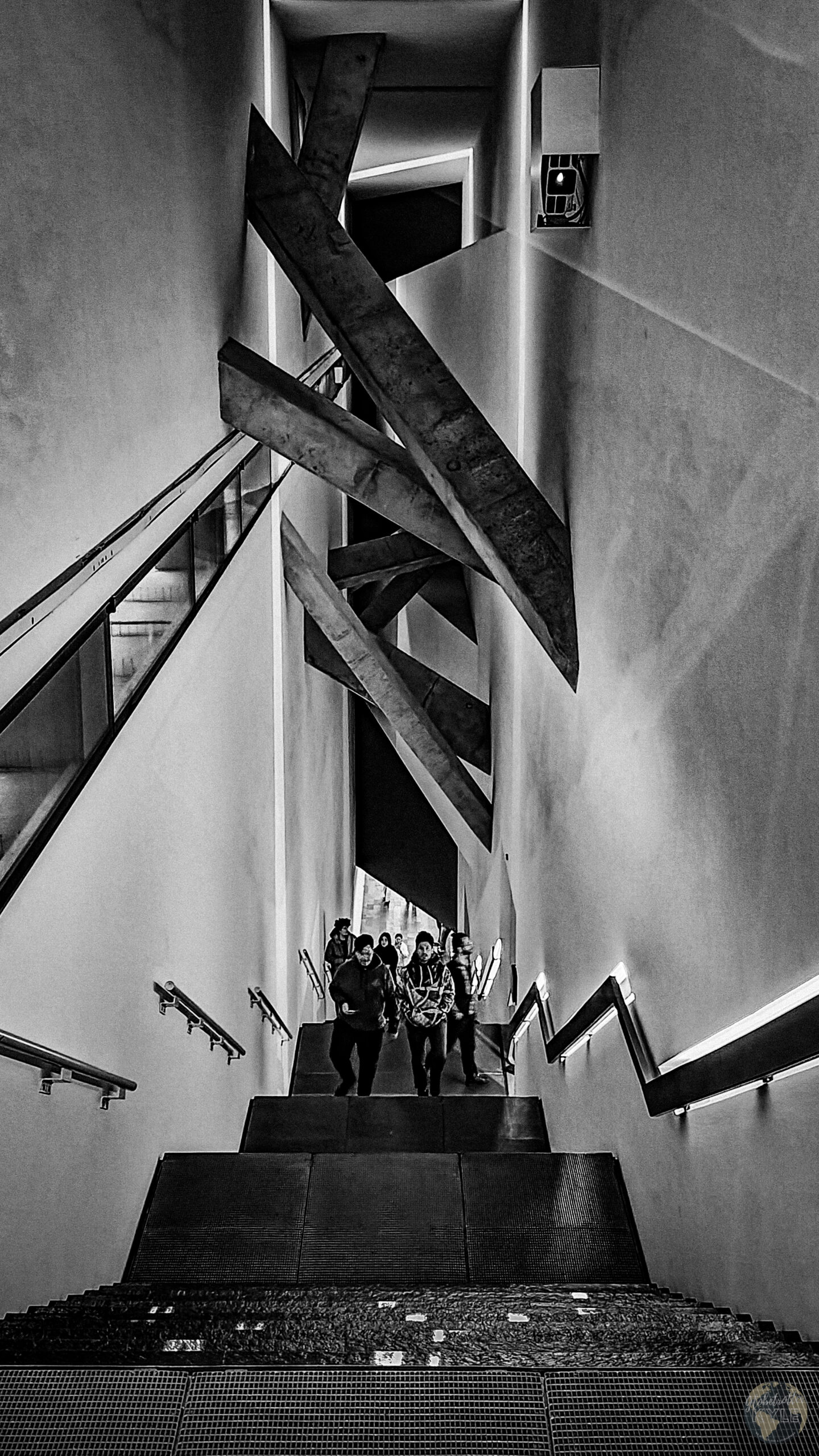
Any Berlin expedition will eventually unfold with a journey into the profound realms of art and faith, and ours was no different. As I alluded to earlier, our first stop upon arrival was the Jewish Museum. This proved to be an emotionally charged journey through the tribulations of history for Ciara and I.
As we entered, I immediately took note of the architecture. It narrated tales of displacement and disorientation, mirroring the experiences of those who faced persecution. I remembered studying this building years ago in college, and I remembered that the shape of the museum resembles that of an exploded Jewish star.
Daniel Libeskind (the museum’s architect) forces visitors to really feel the unease that the Jews felt during the holocaust in so many ways. For example, there isn’t a single right angle on the first floor of the museum; symbolic of how nothing was perfect in those times. Another room is three stories tall, windowless, with only a small slit in the ceiling to provide light. More haunting is the ladder in that room that leads to the roof but is just far enough out of reach, rendering the room inescapable. Needless to say, we left with somber hearts.
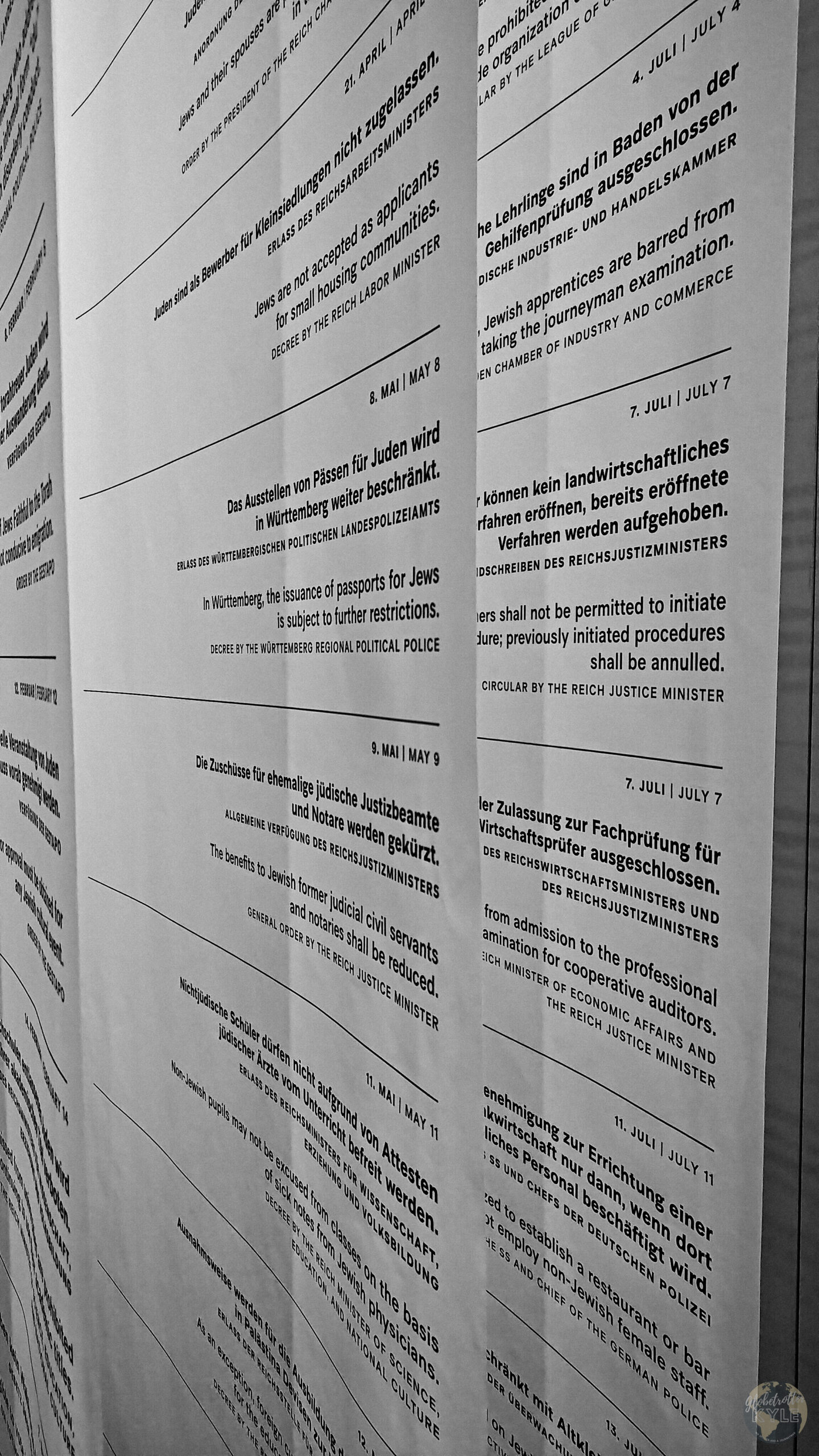
Our journey to the Memorial to the Murdered Jews of Europe wasn’t exactly planned. We sort of happened upon it as we were transiting between other sights. Though we only stayed for a few minutes, I remember the starkness of the concrete slabs stretching like a vast graveyard, enveloping us in a contemplative silence.
As we wandered through the labyrinthine passages, the oppressive weight of the Holocaust stirred our souls. The memorial is not only a place for contemplation and remembrance, but also a powerful testament to the resilience of the human spirit amidst unspeakable tragedy.
Being that it was getting late, Ciara and I directed our steps towards the hotel. However, being the architecture nerd that I am, I had to make a pit stop at the Berlin Cathedral. And what a beauty it was (read: is). Its majestic dome loomed above us as we approached; an architectural marvel that echoed the grandeur of a bygone era. People just don’t build things like this anymore, and it’s a damn shame.
As we stood outside and gazed at the intricate exterior, I realized that this cathedral not only stood as a testament to human craftsmanship and devotion, but as a testament to war, death, and destruction. Somehow, through countless Allied air raids, this building remained standing.
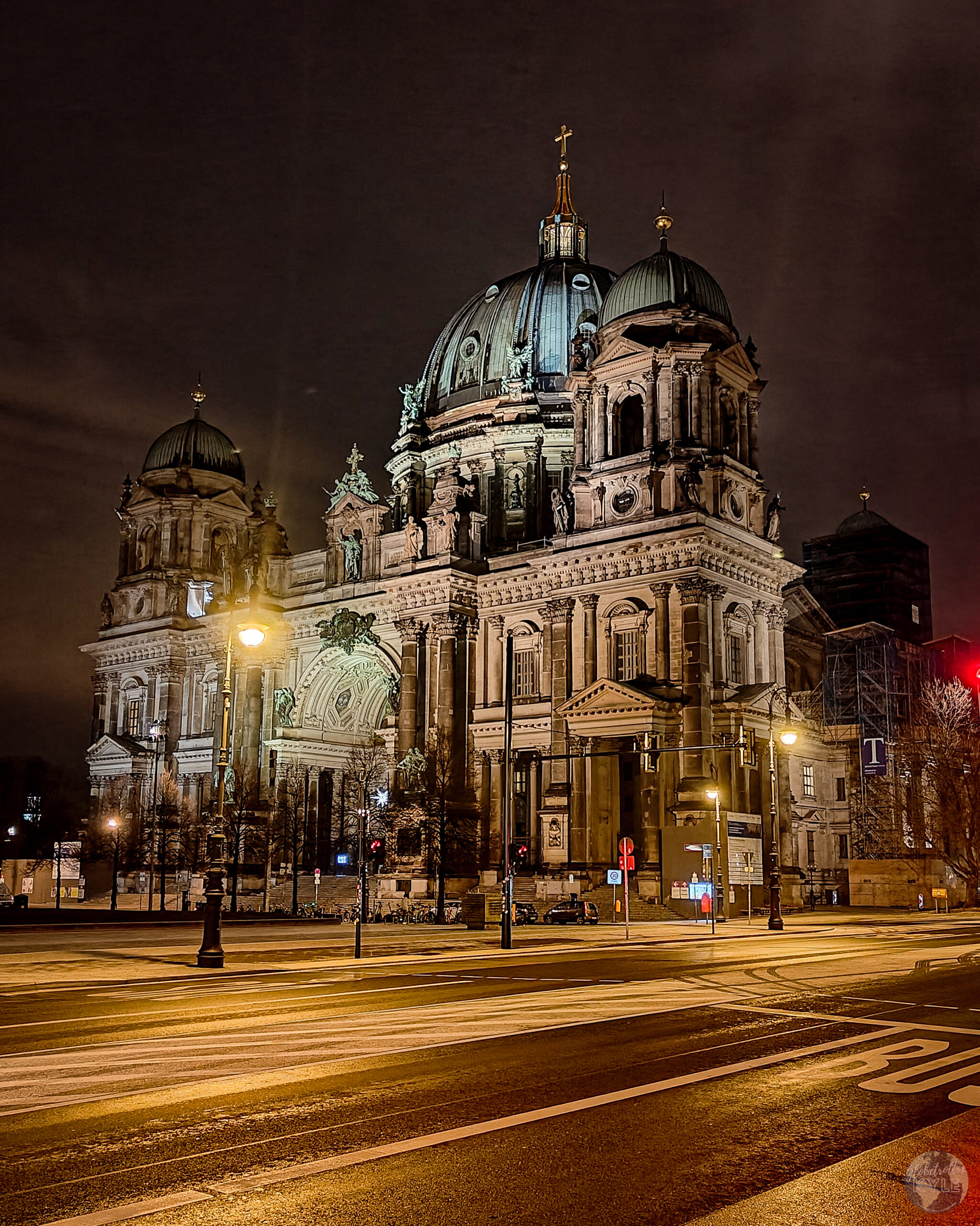
Because we arrived so late in the day, we couldn’t visit the inside as they had already closed the doors for the evening. But do you think this stopped us from wandering around the outside? Of course not. Circling the perimeter, every angle revealed a new facet of its beauty—ornate sculptures, meticulous detailing, and the harmonious interplay of light and shadow.
The exterior became a canvas where the craftsmanship of generations whispered tales of devotion and architectural brilliance. As we circled the cathedral, the city lights of Berlin twinkled all around us and off into the distance, a juxtaposition of the city’s storied past and its vibrant present. The cathedral became a nexus where the echoes of history and the cadence of faith harmonized, offering a moment of respite amidst the bustling city.
One final note: I’d be remorse if I didn’t mention the true highlight of the evening: recreating Ciara and I’s first ever date with some axe throwing! In a surprise discovery, Ciara and I ended the night at Woodcutter Urban Axe Throwing, drinking beers and reminiscing about when we met about 4 years ago. A perfect ending to a perfect day.
Architectural Marvels: Reichstag, Kaiser Wilhelm Memorial Church, and St. Nicholas’ Church
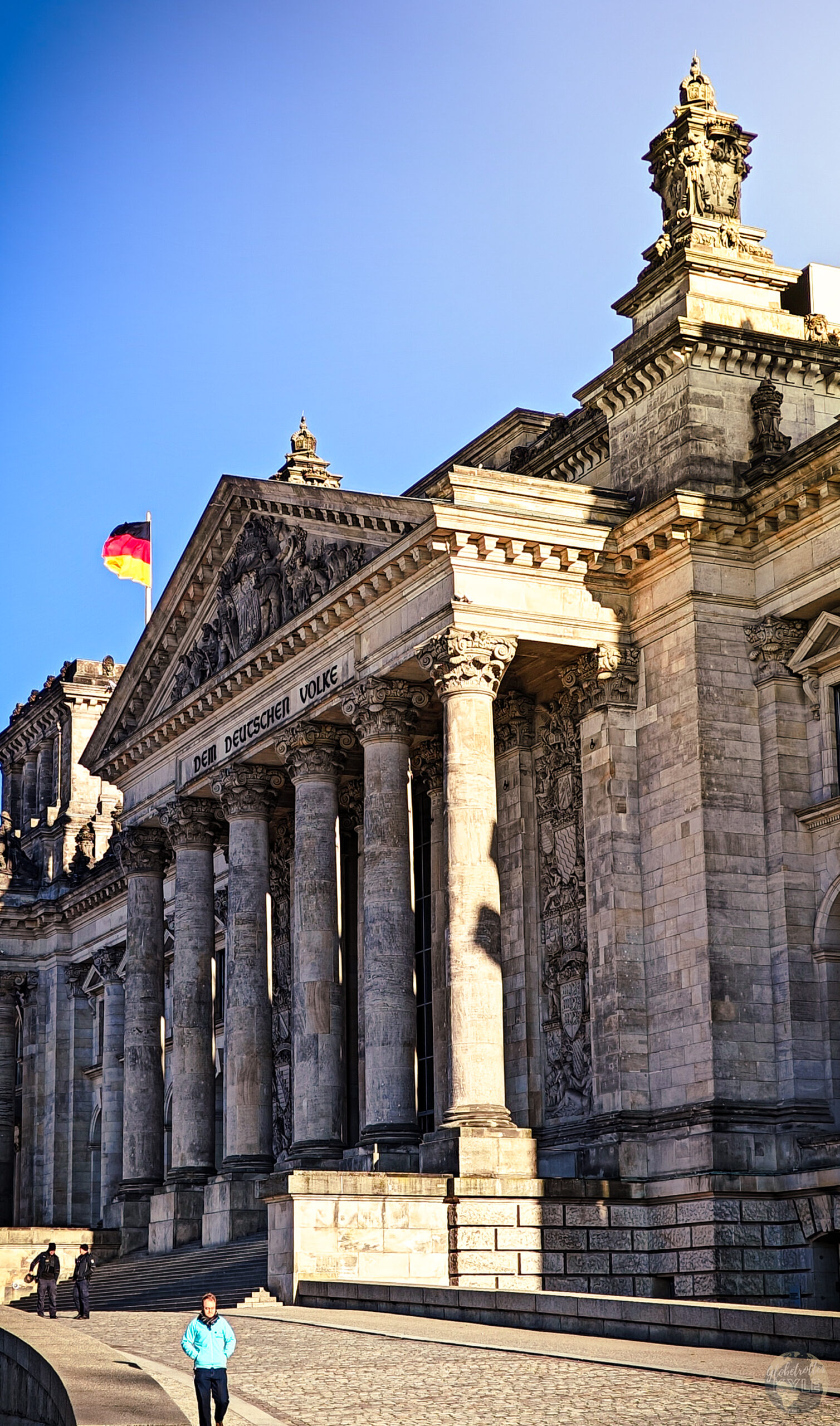
The final day of our Berlin expedition was a day of exploring more architectural marvels that spanned the city’s diverse history. Our first stop was right outside our hotel door: St. Nicholas’ Church. The unique fact about this church is that it’s the oldest in Berlin! And, with almost all churches in Berlin (or any strategic location in Europe during WWII), this church was partially destroyed during Allied air raids. Nonetheless, the charred remnants of the original church became a moving backdrop for the modern structure (rebuilt as recently as the 1980s) that now embraces the old.
Continuing on, Ciara and I had tickets to view the Reichstag dome around 11:00am. While check-in and security were a little haphazardly executed, we eventually made it to the dome of the building. Ascending its iconic glass dome, we were enveloped in a panorama of Berlin’s cityscape. The sun had finally decided to make an appearance! It was truly a gift from God.
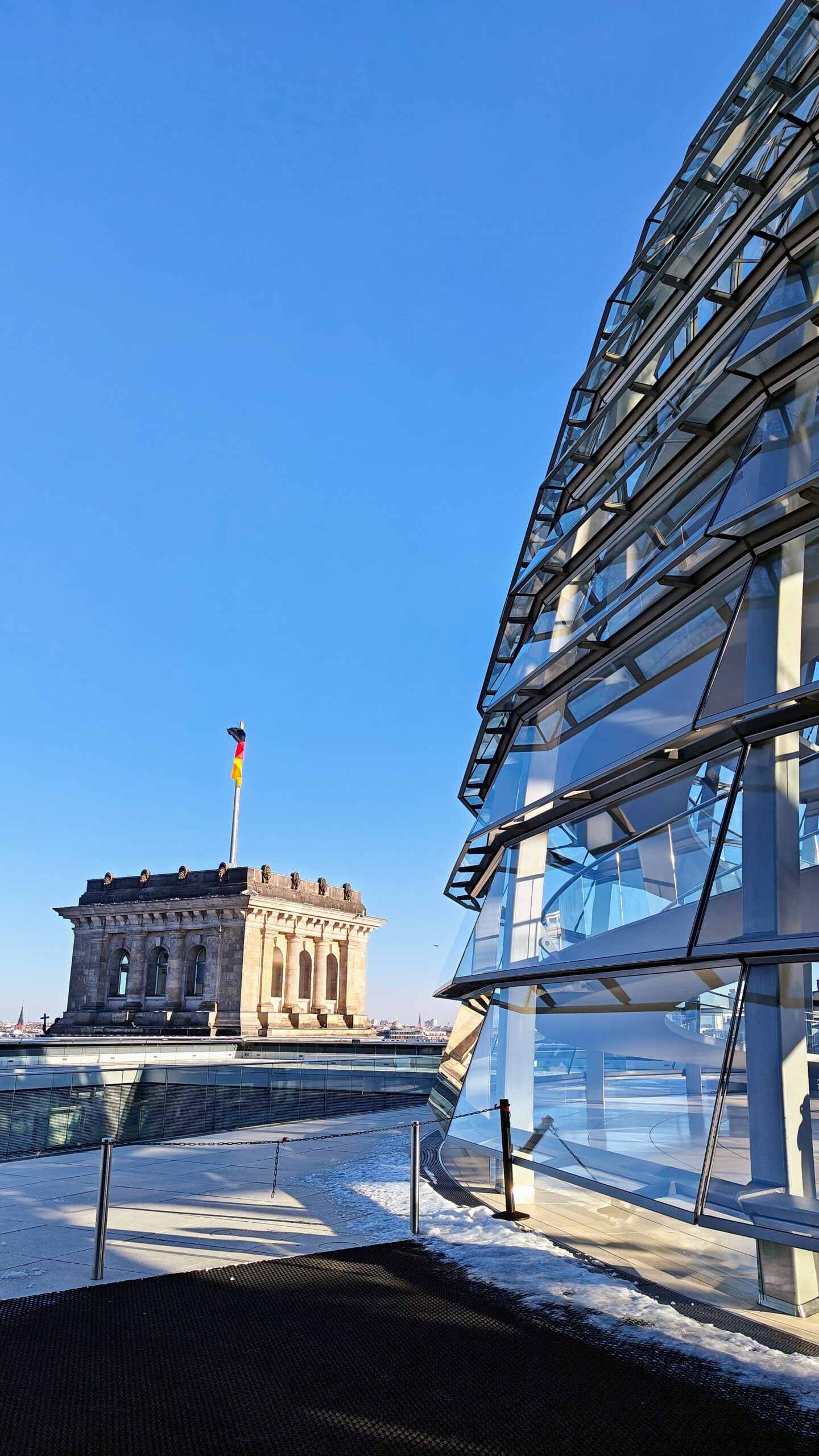
Strolling up the spiral staircase, one is confronted with the intertwining currents of history, politics, and urban life, all converging in an architectural masterpiece. Snapping a few selfies from the top of the dome, we realized that the rumbling in our stomachs wasn’t an earthquake but rather our bodies asking for nourishment. A quick metro ride to a salad joint and we were right as rain.
The day concluded with a visit to the Kaiser Wilhelm Memorial Church, a poignant homage to the scars of war. Of all the perfectly symmetrical churches I’ve seen in Europe, this frayed grouping of brick and stone probably rank this church as one of my most memorable given its composition. The juxtaposition of the damaged original spire alongside the modern structures of the city transported us back to Berlin in the 1940s and made it as if we were actually there.
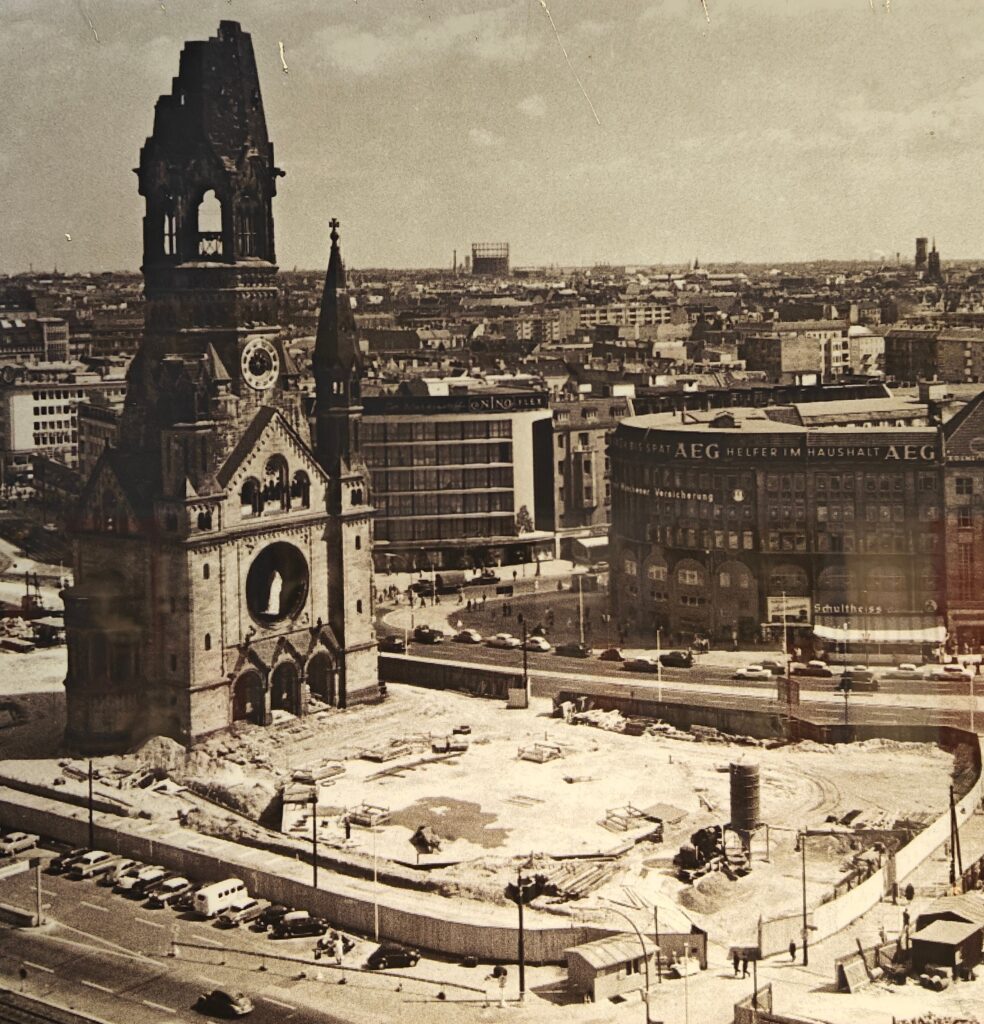
Nowhere else have I found that one can truly see the destruction of war so close. As we stood amidst the remnants of the old church, the somehow-still-standing building became a metaphor for Berlin’s ability to transform tragedy into resilience.
In summary…
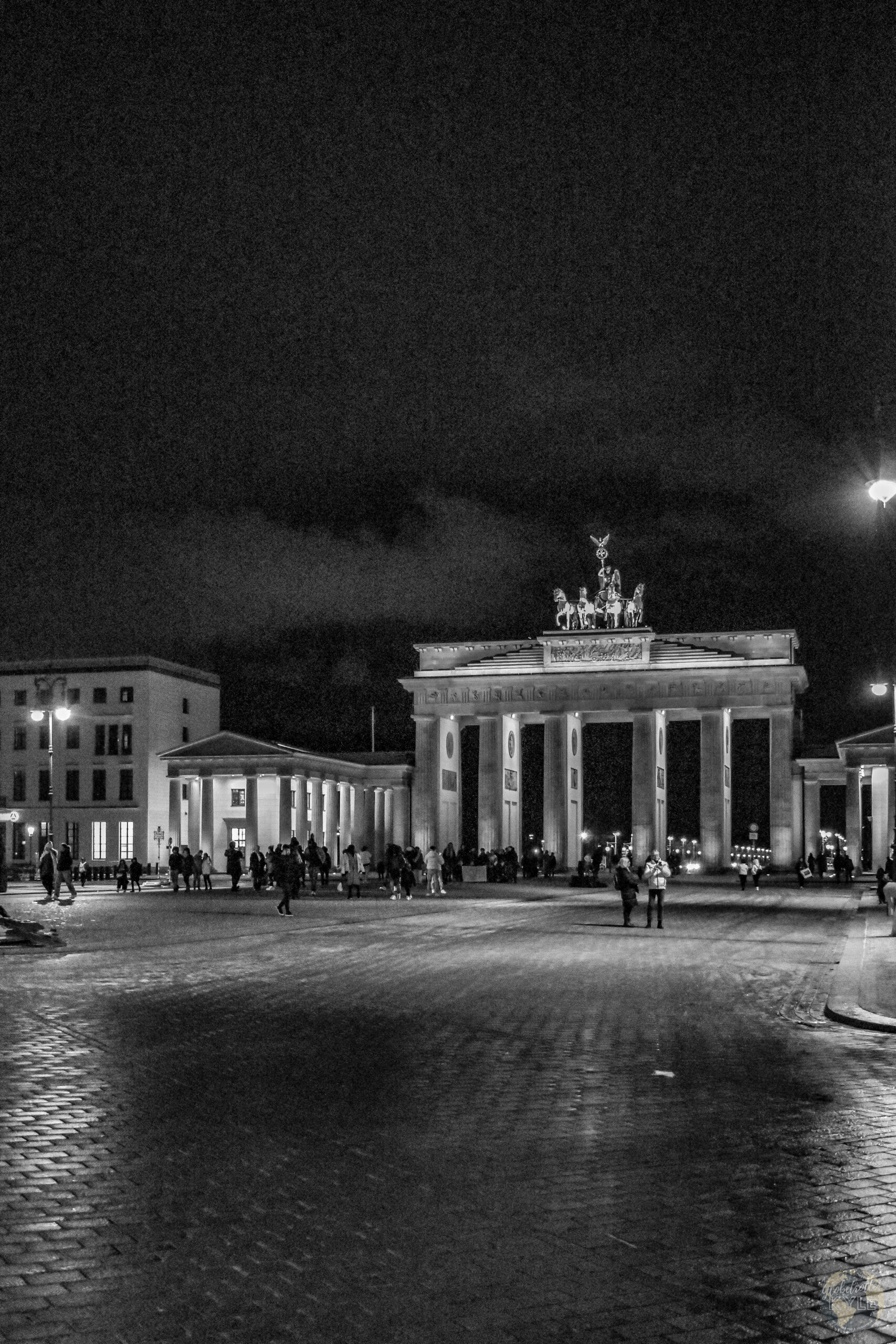
During so many moments, such as standing before the Brandenburg Gate or reading the endless list of senseless laws created against Jews at the Jewish Museum, I felt the pulse of Berlin’s history beneath my feet. And it’s one of somberness. The city became a living museum for Ciara and me, inviting us to be participants in its narrative.
Our exploration of these sites was a journey through the multifaceted facets of human experience—tragedy, faith, artistic expression, reflection, and remembrance. Each location left an indelible mark, urging us to contemplate the intricate interplay between history, spirituality, and the human spirit. I’d really like to return to Berlin someday.
In just three short days, the city continued to unravel its layers, inviting us to delve deeper into its rich tapestry of narratives. And it’s a narrative I’m not finished reading just yet.


Wow! This is a wonderful blog! Your narratives and descriptions of the sites are absolutely eloquent!
And your use of the word ‘juxtaposition’ was just perfect!
So glad that you are writing again!